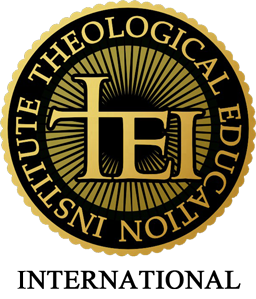Charles Darwin’s Original Dishonesty – Fear of a Level Playing Field
John C. Rankin
(old blog January 23, 2009)
This year is the 150th anniversary of the publication On the Origin of Species by Charles Darwin. The debate over “macroevolution” (defined below) precedes Darwin by two millennia, still rages today, and with Darwin’s original intellectual dishonesty still in place.
Darwin acted in the opposite manner to the third and fourth of the six pillars of biblical power and honest politics as I articulate elsewhere. They are:
- The power of informed choice.
- The power to love hard questions.
These two powers merge, both originally, and in Darwin’s opposition to them.
- Only when terms are defined honestly can informed choice happen, and this leads to a level playing field for all ideas to be heard equally.
- Darwin was deliberately dishonest as he morphed the term “morphology” into “homology.”
- Darwin was deliberately dishonest as he advanced his argument for “common descent,” while refusing to measure it against the reigning paradigm of a “common Designer.” Thus, the debate today over “Intelligent Design” is the debate that has never gone away.
- A level playing field leads to all people being equally accountable to address hard questions. This Darwin feared, and this biblical believers should embrace robustly.
The theory of macroevolution begins with the Greek philosopher Democritus (born ca. 460 B.C.) and was advanced through his later disciple, Epicurus (341-270 B.C.). “Macroevolution” refers to changes that lead one species into becoming a new species. This is distinct from “microevolution” which refers only to changes within a given species. Biblically and scientifically, I see no evidence for macroevolution, but evidence for microevolution is clear.
In a protest concerning the pagan assumptions of the gods and goddesses, and a cosmos understood in that context, Greek philosophers began to move in a secular (“this worldly”) direction.
Epicurus was concerned with how to experience the “good life” in the face of a certain death that extinguishes life and hope. He is known for the “Epicurean swerve” that postulates how the universe began.
In his articulation of this theory, there were supposedly many atoms (the smallest conceivable solid particle in the Greek mind). These atoms were raining from top to bottom (though undefined in space and time), and in straight lines. Then for no known reason, one of these atoms “swerved,” and started a chain collision with other atoms that eventually caused an evolution toward life.
This is philosophy and not science, and it is a philosophy that does not address where the universe and these atoms came from to begin with. It rather begins with an assumption that there is no divine Creator. Such an assumption cuts intellectual inquiry and wonder off at that point.
In nineteenth century England, Darwin provided a mechanism for this theory (descent with modification), though he did not reference Epicurus. He also had deep theological and personal problems with the question of evil and suffering. Like many of his peers in the Enlightenment, had a very poor grasp of the Bible on this subject, and thus moved away from believing that the God of the Bible was good.
But Darwin did something profoundly dishonest as he changed the terms of the debate to suit his presuppositions:
“The homological construction of the whole frame in the members of the same class is intelligible, if we admit their descent from a common progenitor, together with their subsequent adaptation to diversified conditions. On any other view the similarity of pattern between the hand of a monkey, the foot of a horse, the flipper of a seal, the wing of a bat, etc., is utterly inexplicable (The Descent of Man, 1871, p. 31).
First, Darwin changed the language away from “morphology” to “homology.” Morphology is “the branch of biology dealing with the form and structure of organisms.” But homology, though also a biological term, is rooted in the philosophical assumption of “a fundamental similarity based on common descent.”
In other words, morphology describes things the way they are – different species all have the similarity of having “digits” in their bone structures. This is straightforward science. But homology presupposes that these similarities are due to a common organic source – i.e., it presupposes the theory of macroevolution. This is philosophy.
Second, Darwin would not admit any counter theory to be explored. Indeed, for his whole professional life he was arguing against the long-standing idea of a “common Designer,” as articulated in his age by William Paley and others. So, when Darwin says that “any other view … is utterly inexplicable,” he never identifies the view he is challenging, thus not being accountable to its argument.
Had he been honest, he would have stated the arguments for the two competing views side by side, then argued why his theory was better:
- Common Designer – morphological similarities are there because a Designer knew that various forms of life need their respective types of digits to function.
- Common descent – morphological similarities are there because they evolved from a common organic source, all the way up to mankind (the argument with which Darwin concluded Descent).
But he did not. He played a sleight of hand by changing the language to homology, thus making “common descent” a presupposition, not something to be proved. The problem for Darwin was this – whereas his theory could have some logical ability given its starting point, he still could not rise above the illogic of the Epicurean swerve. He would not look at the question of origins. Where did the first living cell come from? And this leads us to the debate over “intelligent design,” which is merely current language for a “common Designer.” It has always been the same debate that Darwin would not honestly admit or confront head-on.
###


